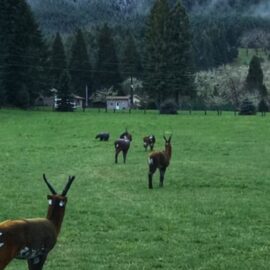

This article is an excerpt from the Shortform book guide to "Unsettled" by Steven E. Koonin. Shortform has the world's best summaries and analyses of books you should be reading.
Like this article? Sign up for a free trial here.
How accurate are climate models? Can we trust them to give us a good picture of the future?
Steven E. Koonin contends that climate scientists’ models don’t reliably predict future climate change. He points to three flaws: The grids they use are too large, they require initial conditions that we can’t measure, and they have to be “tuned” to avoid contradictions.
Read more to understand each of these flaws better.
Flaw #1: Grid Sizes
How accurate are climate models? Koonin’s first argument against their accuracy is that their grids are too large to account for smaller climate phenomena. These models, he clarifies, plot the earth’s atmosphere on a grid composed of 100-kilometer by 100-kilometer sections, with every section reporting an array of measurements—temperature, humidity, wind speed, and so on.
(Shortform note: It stands to reason that as computers continue to improve, grid resolution will likewise improve. After all, as computers have gotten more powerful, climate models have been able to use increasingly more fine-grained grids. For instance, global climate models in the 1990s had grid cells of about 200 kilometers by 300 kilometers. By contrast, current regional climate models can have grid cells as small as one kilometer.)
As such, Koonin claims these grids can’t account for weather-related phenomena that occur on scales smaller than 100 kilometers, such as storms and cloud coverage. Consequently, these models must accept some degree of inaccuracy.
Flaw #2: The Problem of Initialization
Moreover, Koonin argues that these models require data about initial weather conditions that we often don’t have access to. In particular, he argues that we lack the observational apparatus needed to supply such in-depth information for the entire globe. In turn, models depend on assumptions for many grid segments that aren’t empirically verified, making them less credible.
(Shortform note: Rather than merely criticizing the lack of the apparatus needed to supply initial conditions, other experts go a step further, claiming that it’s practically impossible to observe all the relevant initial conditions on a global scale. For instance, factors like the thickness of sea ice, the moisture of soil, and the ocean’s heat content all impact the climate system, yet cannot realistically be measured globally. As such, the problem of initialization is unlikely to be resolved in the near future.)
Flaw #3: The Tuning Process
Finally, Koonin notes that climate scientists “tune” their models to account for incorrect results, which makes them suspect. Because climate models are inaccurate initially, due to the complexity of the climate system and the array of subgrid assumptions that must be made, climate scientists tune them to avoid inconsistent and inaccurate predictions. According to Koonin, however, this process makes climate models far less credible, as their creators change crucial parameters by fiat to make the models appear more accurate.
(Shortform note: Although climate scientists sometimes avoid discussions of tuning, fearing that such discussions would only fuel climate skepticism, others are now trying to be more transparent about the tuning process. This transparency, they argue, helps climate scientists see the strengths of different tuning processes and find out which outputs only arise after tuning.)

———End of Preview———
Like what you just read? Read the rest of the world's best book summary and analysis of Steven E. Koonin's "Unsettled" at Shortform.
Here's what you'll find in our full Unsettled summary:
- That humans are only partially to blame for the warming climate
- Why the proposed solutions to climate change are unlikely to succeed
- Alternative responses to climate change and how to improve understanding






